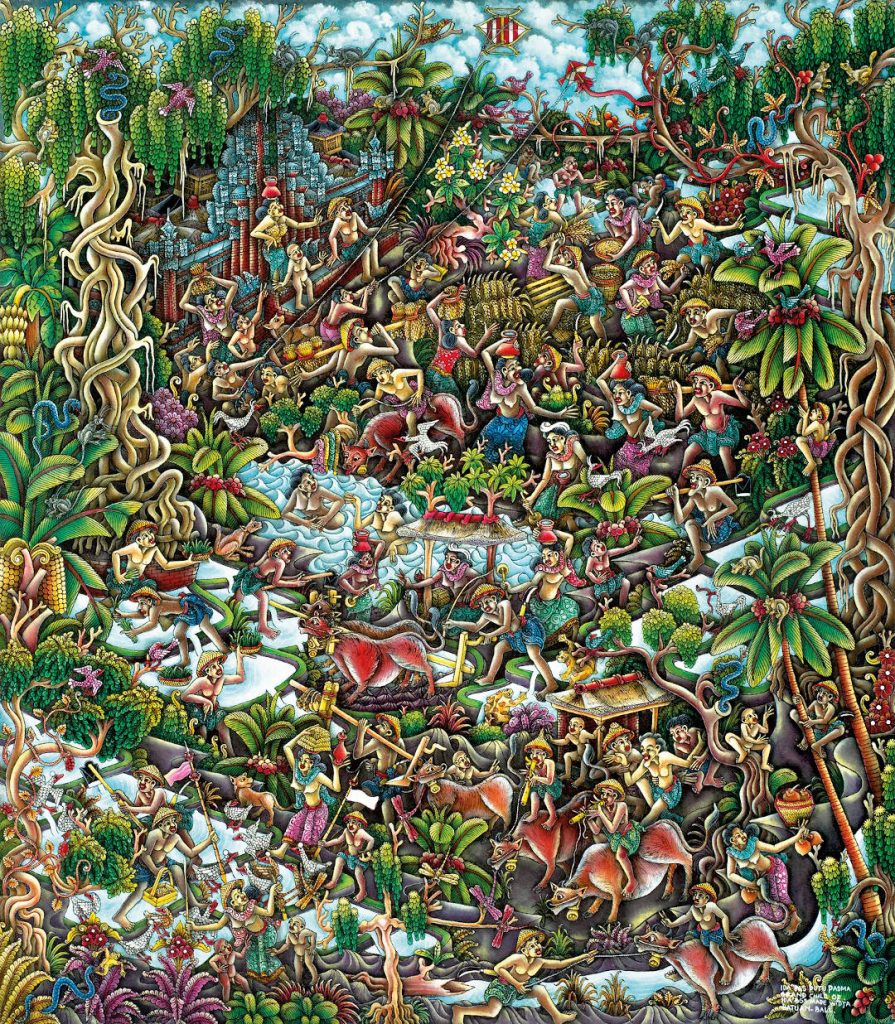This month’s painting is a very large work on canvas – 200 cm x 125 cm – by Ida Bagus (IB) Putu Padma. The image to the right is just a detail of the entire painting.

Ida Bagus Putu Pandma
200cm x 150cm
Canvas
2008
The artist who created this vibrant canvas is a member of a family of well known painters. His grandfather is the venerated Ida Bagus Wija, one of the first pioneers of the Batuan style. His paintings are dark and brooding with very little contrast. His father is Ida Bagus Cakra, who paints in a very idiosyncratic style, almost impressionistic in its disregard for sharply delineated forms common to Batuan painting. IB Padma also makes works that are defiant. It is the colours that first strike the viewer with their vibrant chromaticism. The bright primary colours are reminiscent of ‘pop art’ paintings from Europe and America that were popular in the 1960’s, and almost seem like a visual joke. But if you allow your eyes to adjust a while, you will find that there is serious painting going on here. The intricate forms of the painting are carefully interlocked with each other and create a very specific visual rhythm.
These family members were not involved in the other painting studios in Batuan, and so were able to develop their styles independently of the more common modes of expression in Batuan at that time. One might wonder how these three painters from three generations could have such a diverse range of expression. But a closer look at their paintings shows a strong resemblance that underlies their differences. For example, the way they portray the human form is very similar, as well as the way they depict the strange, contorted trees, with the coiled snakes that inhabit their upper branches.
IB Padma’s painting shown here creates a view of the everyday activities of a Balinese village, featuring the labor intensive work of wet rice cultivation. As always in Bali, this work is not an exercise in pure physical labor, notice the temple with villagers bringing offerings at the upper left side of the painting.






